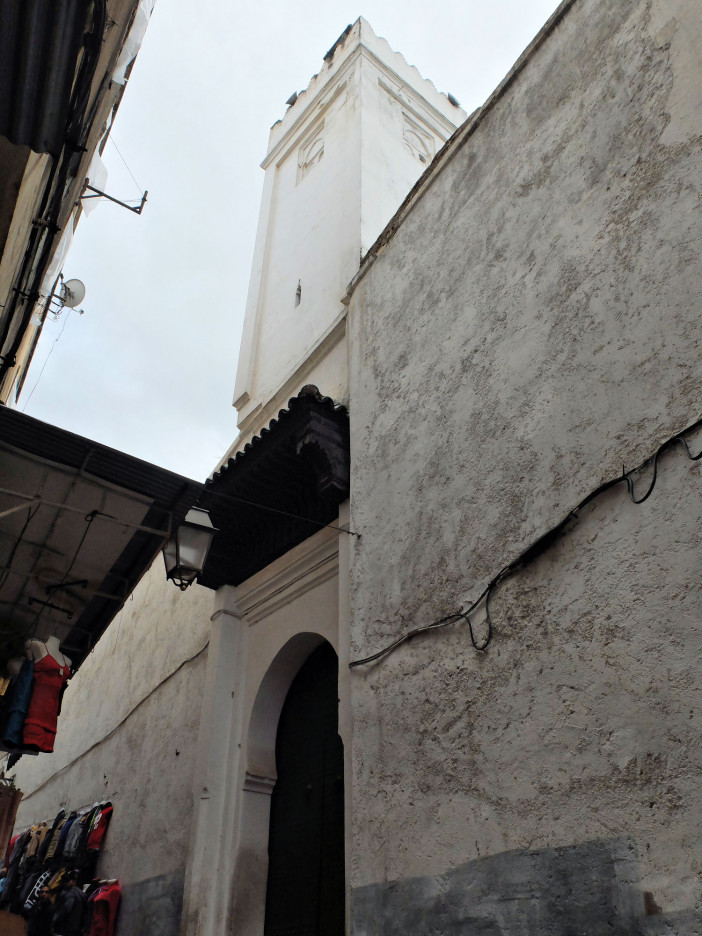El-Oued Mosque
History
The mosque stands where the Madrasa el-Oued once stood, a madrasa that the Marinid ruler Abu Sa'id Uthman II constructed in 1323.The name of the madrasa, "Mosque of the River," alludes to the fact that it was built on top of the Oued Masmouda, a waterway that branched off the Oued Fes river system and once provided water to a significant portion of Fes el-Andalus Bali's neighborhood. (Since then, the waterway has been completely blocked off. ) Similar to how the Seffarine and al-Attarine Madrasas serviced students at the al-Qarawiyyin Mosque across the river, it was constructed to offer housing and instruction for students studying at the neighboring Andalus Mosque, together with the Madrasa as-Sahrij and the Madrasa as-Sba'iyyin.
Despite being a significant hub of learning and research in the middle centuries, the Andalus mosque was later supplanted by the Qarawiyyin Mosque/University and went into relative decline, presumably rendering the madrasas less significant. The madrasa was destroyed and a new mosque, which is now one of the district's primary Friday mosques, was constructed over it by the Alaouite ruler Moulay Slimane, who also constructed a number of other mosques in Fes.
Urban and Architectural
The mosque is built in accordance with the typical Moroccan mosque architectural style. It has a noticeable square-shaft minaret with merely ornamental window frames. A proportionally very big rectangular courtyard (sahn), partially planted with fruit trees, is what makes the mosque's design unique.
Description
References
Mosquée el oued (Information plaque). Posted on a wall near the entrance of the mosque. ADER-Fes. November 2014.
Le Tourneau, Roger (1949). Fès avant le protectorat: étude économique et sociale d'une ville de l'occident musulman. Casablanca: Société Marocaine de Librairie et d'Édition. pp. 141, 586.
Parker, Richard (1981). A practical guide to Islamic Monuments in Morocco. Charlottesville, VA: The Baraka Press.
Details
الموقع
Fes, Morocco
المالك / المتبرع
Sultan Abu Sa'id Uthman II (as madrasa), Sultan Moulay Slimane (as mosque)
تاريخ البناء
between 1792 and 1822 (as mosque)
الرسومات المعمارية
الخريطة
History
The mosque stands where the Madrasa el-Oued once stood, a madrasa that the Marinid ruler Abu Sa'id Uthman II constructed in 1323.The name of the madrasa, "Mosque of the River," alludes to the fact that it was built on top of the Oued Masmouda, a waterway that branched off the Oued Fes river system and once provided water to a significant portion of Fes el-Andalus Bali's neighborhood. (Since then, the waterway has been completely blocked off. ) Similar to how the Seffarine and al-Attarine Madrasas serviced students at the al-Qarawiyyin Mosque across the river, it was constructed to offer housing and instruction for students studying at the neighboring Andalus Mosque, together with the Madrasa as-Sahrij and the Madrasa as-Sba'iyyin.
Despite being a significant hub of learning and research in the middle centuries, the Andalus mosque was later supplanted by the Qarawiyyin Mosque/University and went into relative decline, presumably rendering the madrasas less significant. The madrasa was destroyed and a new mosque, which is now one of the district's primary Friday mosques, was constructed over it by the Alaouite ruler Moulay Slimane, who also constructed a number of other mosques in Fes.
Urban and Architectural
The mosque is built in accordance with the typical Moroccan mosque architectural style. It has a noticeable square-shaft minaret with merely ornamental window frames. A proportionally very big rectangular courtyard (sahn), partially planted with fruit trees, is what makes the mosque's design unique.
Description



